Courtesy: John Mather
The English Lake District occupies a stunning corner of North West England and is characterized by rugged mountains and majestic, pristine waters. Designated a UNESCO World Heritage Site in 2017, this beautiful area is famous for its literary associations through the works of William Wordsworth and Beatrix Potter. It is now also assuming the role of a mecca for British open water swimmers. It annually hosts The Great North Swim, one of the country’s most popular swimming events, which regularly attracts over ten thousand competitors.
Perhaps I am biased. Even though I have dipped my toes in spots as remote as Siberia, Turkey and Indonesia, I still believe that there can’t be that many other places that can offer better conditions. Swimming in such clear, silent waters is absolutely magical.
In 2014, I decided to celebrate my 60th birthday by attempting to swim the length of all seventeen lakes contained within the English Lake District, little realizing the time, effort or the planning that would be involved. These 17 lakes range in size from the smallest which is just under half a mile in length, to Windermere, the longest natural lake in England, which is ten and a half miles long. I always swam with friends and was supported by one or more boats in the busier lakes.
I was fortunate to experience so many highlights: heading straight down the length of Wast Water in the shadow of mighty rock screes; racing with four hundred other swimmers along the 5 mile length of Coniston Water and even squeezing through the narrowest of tree lined passageways between Elter Water’s hidden pools.
Of course the potential perils of open water swimming should never be underestimated and not every swim went to plan. The less said about enduring the southern shores of Windermere in a torrential rain storm and misjudging the length and temperatures of a freezing Bassenthwaite Lake, the better! I was equally shocked to discover that Grasmere’s apparently enchanting blue waters should prove to be so taxing or unpleasant. Areas of the dense, silt laden bed proved near un-swimmable.
As well as being rewarded with many encounters of the local wildlife, the swim also made me aware of threats to the environment from the spread of invasive non-native species (INNS). This alien plant called Australian swamp crop, or New Zealand pigmyweed, is proving a particular threat to Lake District wildlife. Growth is phenomenal and I can vouch that it is already invading and causing damage in the so called “nutrient rich” waters of some of the lakes.
At least, the authorities have finally woken up to a long standing issue with the build-up of high phosphate levels in some waters and have recently initiated a number of schemes to improve matters. These should, hopefully, improve water quality and reduce the occurrence of toxic blue-green algae.
I left the two longest and most challenging lakes until the end of my challenge. Many regard Ullswater, a 7.5 miles long lake, to be more of an inland sea than a mere lake; such is its reputation for harboring capricious winds and contrary currents that present a serious challenge to any sailor, never mind long distance swimmer. I might have been exhausted but I couldn’t resist a celebratory sprint to acknowledge the crowd of well-wishers cheering and applauding me over the finishing line.
And if Ullswater can be likened to a sea, then It has to be said that swimming the 10.5 miles length of Windermere, England’s longest and busiest lake must be regarded, and, more importantly, respected as an ocean. I felt that I really hadn’t the heart to attempt to swim the entire lake in one go and so I planned to complete the swim over three manageable stages over three consecutive days. I needed to muster all my resolve and something else to survive those surging waves mid lake and then go on and complete the swim. This surely had to be one of my sternest tests of stamina and resolve in the entire lake challenge.
Despite not being allowed to swim in those three lakes used as reservoirs and the privately owned Esthwaite Water I am very proud of what I have achieved. I have estimated that I have swum a total distance of 40 miles to achieve this task, which is far greater than that covered by someone attempting to cross the English Channel. Nevertheless, I openly admit that my project would never even have got off the ground had it not been for the advice and encouragement of countless people and the generosity of many organizations.
I hope that my accompanying book will make all water users, not just the ever growing number of swimmers taking up open water swimming, be more aware of their responsibilities and their need to safeguard this wonderful region of England for future generations.
Book details
- Title of book: Challenging Waters, The Diary of a Lake District Swimmer
- ISBN: 978-0-9955990-0-0
- Independent publisher: Sublime Swimming Press
- Date of Publication: 28 February 2018
- Format: Paperback
- Price: £9.99
- Includes 20 full page black and white drawings and 6 full page colour photographs
Website: https://www.johncmatherbooks.co.uk/
Facebook Page: Challenging Waters
- John swimming in Ullswater in July 2016 – photo courtesy John Mather
- John swimming in Wast Water in July 2016 – photo courtesy John Mather
- John competing in Ullswater in July 2016 – photo courtesy John Mather
- John’s illustration of Ullswater – courtesy John Mather
- John’s illustration of Windermere – courtesy John Mather
- John’s swimming group entering Brothers Water in June 2015 – photo courtesy John Mather
- John and his swimming buddy Tom ready to start swimming Elter Water, the final lake of my challenge, in September 2016 – photo courtesy John Mather
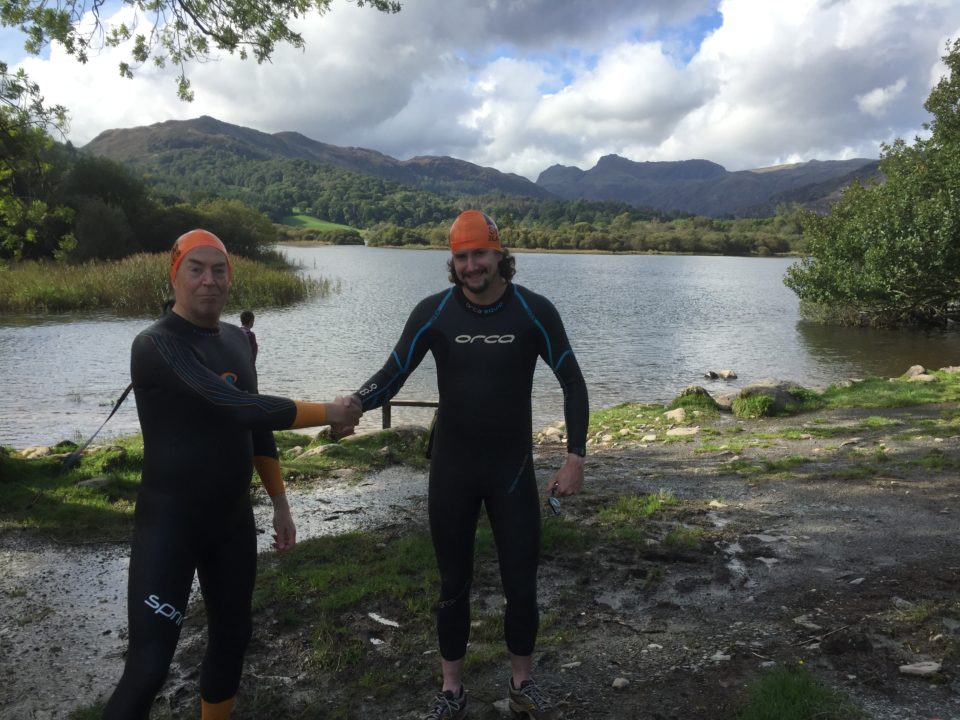
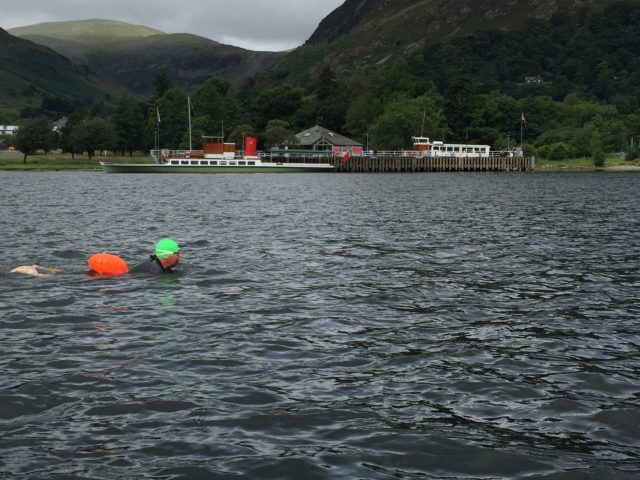
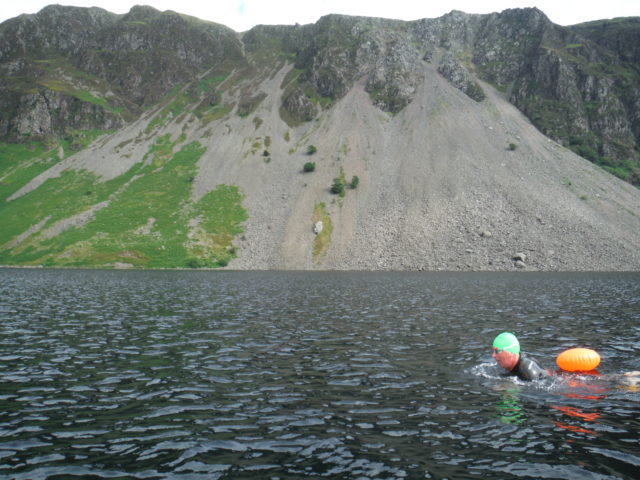
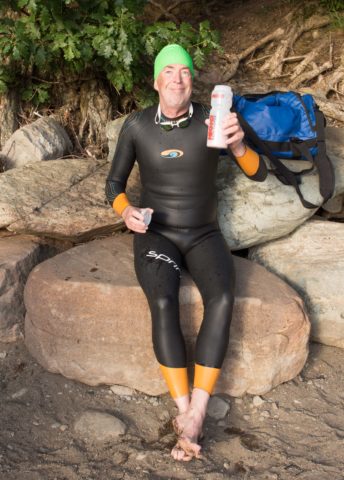
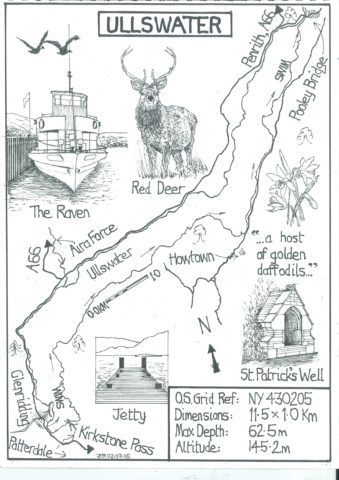
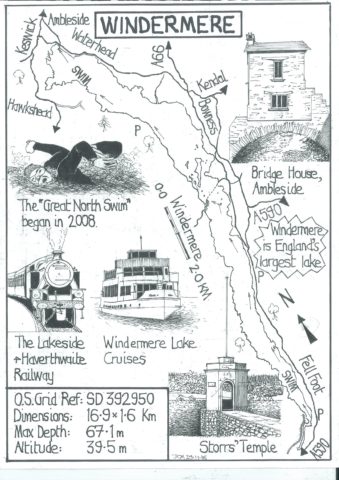

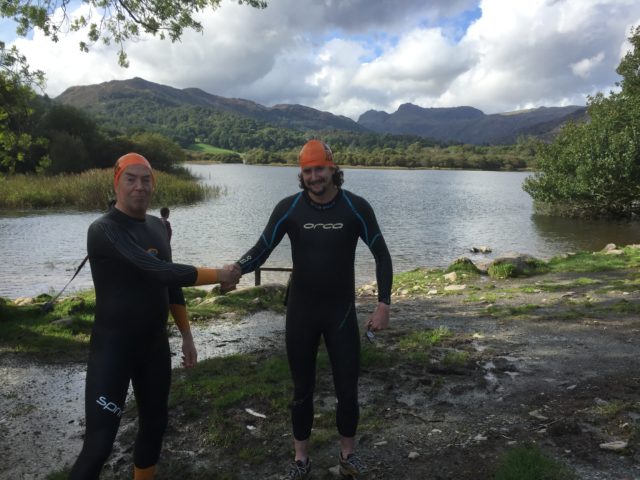
Such beautiful places. Makes me want to do open water.